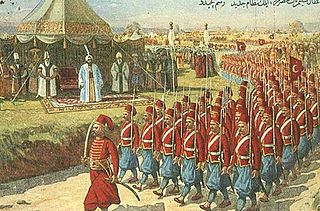 W
WThe 1806 Edirne Incident was an armed confrontation between the New Order Troops of Ottoman Sultan Selim III and a coalition of Balkan magnates, ayans, and the region's Janissary garrisons that occurred in Thrace throughout the summer of 1806. The cause of the incident was Selim III's attempt to expand the New Order's permanent presence into Rumelia through the establishment of New Order barracks in the region's cities. The ultimate outcome of the confrontation was the retreat of imperial forces back to Istanbul and to Anatolia, constituting a deathblow to Selim III's ambitions of expanding his reformed army, as well as a major blow to his legitimacy. The outcome of the Edirne Incident would play no small part in his deposition the following May.
 W
WThe Action of 9 July 1806 was a minor engagement between a French privateer frigate and British forces off Southern Ceylon during the Napoleonic Wars. French privateers operating from the Indian Ocean islands of Île Bonaparte and Île de France were a serious threat to British trade across the Indian Ocean during the Wars, and the British deployed numerous methods of intercepting them, including disguising warships as merchant vessels to lure privateers into unequal engagements with more powerful warships. Cruising near the Little Basses Reef on the Southern coast of Ceylon, the 34-gun privateer Bellone was sighted by the 16-gun British brig HMS Rattlesnake, which began chasing the larger French vessel. At 15:15, a third ship was sighted to the south, which proved to be the 74-gun ship of the line HMS Powerful, disguised as an East Indiaman.
 W
WThe Action of 13 March 1806 was a naval engagement of the Napoleonic Wars, fought when a British and a French squadron met unexpectedly in the mid-Atlantic. Neither force was aware of the presence of the other prior to the encounter and were participating in separate campaigns. The British squadron consisted of seven ships of the line accompanied by associated frigates, led by Rear-Admiral Sir John Borlase Warren, were tasked with hunting down and destroying the French squadron of Contre-Admiral Jean-Baptiste Willaumez, which had departed Brest for raiding operations in the South Atlantic in December 1805, at the start of the Atlantic campaign of 1806. The French force consisted of one ship of the line and one frigate, all that remained of Contre-Admiral Charles-Alexandre Durand Linois' squadron that had sailed for the Indian Ocean in March 1803 during the Peace of Amiens. Linois raided British shipping lanes and harbours across the region, achieving limited success against undefended merchant ships but repeatedly withdrawing in the face of determined opposition, most notably at the Battle of Pulo Aura in February 1804. With his stores almost exhausted and the French ports east of the Cape of Good Hope that could have offered him replenishment eliminated, Linois decided to return to France in January 1806, and by March was inadvertently sailing across the cruising ground of Warren's squadron.
 W
WThe Action of 18 October 1806 was a minor naval engagement during the Napoleonic Wars, fought between the British Royal Navy frigate HMS Caroline and a Dutch squadron at the entrance to Batavia harbour on Java in the Dutch East Indies. During the battle the Dutch frigate Maria Riggersbergen was left unsupported by the remainder of the squadron and, isolated, was forced to surrender. Captain Peter Rainier, the British commander, was subsequently free to remove his prize from within sight of the Dutch port when the remainder of the Dutch squadron refused to engage Caroline and their crews deliberately grounded the ships to avoid capture. He also returned many prisoners taken previously in a captured brig.
 W
WThe Action of 21 April 1806 was a minor engagement between a French frigate and British forces off South Africa during the Napoleonic Wars. The Île Bonaparte and Île de France constituted French outposts in the Indian Ocean, from which privateers and frigate squadrons could engage in commerce raiding and disrupt British shipping. After encountering a strongly escorted British convoy, the 40-gun Cannonière attempted to flee, but was rejoined by the 74-gun HMS Tremendous. In the ensuing battle, Captain Bourayne displayed superior sailmanship and managed to fend off his much stronger opponent by a combination of manoeuvers that rendered the batteries of Tremendous ineffective, and threatened her with sustaining raking fire. The French frigate thus managed to evade and escape.
 W
WThe Action of 23 August 1806 was a minor naval battle of the Napoleonic wars, fought off the coast of Spanish Cuba near the port of Havana. The Spanish frigate Pomona was captured by the frigates HMS Anson and HMS Arethusa under the commands of Captain Charles Lydiard and Charles Brisbane respectively. As well as the frigate being captured, a shore battery was silenced and a fleet of gunboats was defeated.
 W
WThe Action of 25 September 1806 was a naval battle fought during the Napoleonic Wars off the French Biscay port of Rochefort. A French squadron comprising five frigates and two corvettes, sailing to the French West Indies with supplies and reinforcements, was intercepted by a British squadron of six ships of the line that was keeping a close blockade of the port as part of the Atlantic campaign of 1806. The British ships, under the command of Commodore Sir Samuel Hood, spotted the French convoy early in the morning of 25 September, just a few hours after the French had left port, and immediately gave chase. Although the French ships tried to escape, they were heavily laden with troops and stores, and the strong winds favoured the larger ships of the line, which caught the French convoy after a five-hour pursuit, although they had become separated from one another during the chase.
 W
WThe Action of 26 July 1806 was a minor naval engagement of the Napoleonic Wars fought off the southern coast of the island of Celebes in the Dutch East Indies. During the battle, a small British squadron attacked and defeated a Dutch force defending a valuable convoy, which was also captured. The British force—consisting of the frigate HMS Greyhound and brig-sloop HMS Harrier under the command of Captain Edward Elphinstone—was initially wary of the Dutch, mistaking the Dutch East Indiaman merchant ship Victoria for a ship of the line. Closer observation revealed the identity of the Dutch vessels the following day and Elphinstone led his frigate against the leading Dutch warship Pallas while Harrier engaged the merchant vessels and forced them to surrender. Only the corvette William escaped, taking no part in the engagement.
 W
WThe Atlantic campaign of 1806 was a complicated series of manoeuvres and counter-manoeuvres conducted by squadrons of the French Navy and the British Royal Navy across the Atlantic Ocean during the spring and summer of 1806, as part of the Napoleonic Wars. The campaign followed directly from the Trafalgar campaign of the year before, in which the French Mediterranean fleet had crossed the Atlantic, returned to Europe and joined with the Spanish fleet. On 21 October 1805, this combined force was destroyed by a British fleet under Lord Nelson at the Battle of Trafalgar, although the campaign did not end until the Battle of Cape Ortegal on 4 November 1805. Believing that the French Navy would not be capable of organised resistance at sea during the winter, the First Lord of the Admiralty Lord Barham withdrew the British blockade squadrons to harbour. Barham had miscalculated – the French Atlantic fleet, based at Brest, had not been involved in the Trafalgar campaign and was therefore at full strength. Taking advantage of the reduction in the British forces off the port, Napoleon ordered two heavy squadrons to sea, under instructions to raid British trade routes while avoiding contact with equivalent Royal Navy forces.
 W
WThe Raid on Batavia of 27 November 1806 was a successful attempt by a large British naval force to destroy the Dutch squadron based on Java in the Dutch East Indies that posed a threat to British shipping in the Straits of Malacca. The British admiral in command of the eastern Indian Ocean, Rear-Admiral Sir Edward Pellew, led a force of four ships of the line, two frigates and brig to the capital of Java at Batavia, in search of the squadron, which was reported to consist of a number of Dutch ships of the line and several smaller vessels. However the largest Dutch ships had already sailed eastwards towards Griessie over a month earlier, and Pellew only discovered the frigate Phoenix and a number of smaller warships in the bay, all of which were driven ashore by their crews rather than engage Pellew's force. The wrecks were subsequently burnt and Pellew, unaware of the whereabouts of the main Dutch squadron, returned to his base at Madras for the winter.
 W
WThe Battle of Deligrad was fought between Serbia and the Ottoman Empire in 1806.
 W
WThe Battle of Mišar, part of the First Serbian Uprising, took place from 12 to 15 August 1806, with a Serbian victory over the Ottomans. For months the Serbian insurgents remained entrenched in sconces on the field of Mišar Hill as a pitched battle itself seemed suicidal from the Serbian standpoint since their army of 8,000 men stood against an Ottoman force some 40,000 strong.
 W
WThe Battle of Mole Lake was a battle fought in 1806 between Sioux and Chippewa warriors. It was fought over wild rice beds located in Forest County, Wisconsin, United States.At the time, the area of the battle was part of the Indiana Territory.
 W
WThe Battle of Blaauwberg, also known as the Battle of Cape Town, fought near Cape Town on Wednesday 8 January 1806, was a small but significant military engagement. After a British victory, peace was made under the Treaty Tree in Woodstock. It established British rule in South Africa, which was to have many ramifications for the region during the nineteenth and twentieth centuries. A bi-centennial commemoration was held in January 2006.
 W
WThe British invasions of the River Plate were a series of unsuccessful British attempts to seize control of areas in the Spanish colonial Viceroyalty of the Río de la Plata that were located around the Río de la Plata in South America — in present-day Argentina and Uruguay. The invasions took place between 1806 and 1807, as part of the Napoleonic Wars, when Spain was an ally of Napoleonic France.
 W
WThe Battle of Campo Tenese saw two divisions of the Imperial French Army of Naples led by Jean Reynier attack the left wing of the Royal Neapolitan Army under Roger de Damas. Though the defenders were protected by field fortifications, a French frontal attack combined with a turning movement rapidly overran the position and routed the Neapolitans with heavy losses. The action occurred at Campotenese, a little mountain village in the municipality of Morano Calabro in the north of Calabria. The battle was fought during the War of the Third Coalition, part of the Napoleonic Wars.
 W
WThe Battle of Czarnowo on the night of 23–24 December 1806 saw troops of the First French Empire under the eye of Emperor Napoleon I launch an evening assault crossing of the Wkra River against Lieutenant General Alexander Ivanovich Ostermann-Tolstoy's defending Russian Empire forces. The attackers, part of Marshal Louis-Nicolas Davout's III Corps, succeeded in crossing the Wkra at its mouth and pressed eastward to the village of Czarnowo. After an all-night struggle, the Russian commander withdrew his troops to the east, ending this War of the Fourth Coalition action. Czarnowo is located on the north bank of the Narew River 33 kilometres (21 mi) north-northwest of Warsaw, Poland.
 W
WIn the Capitulation of Erfurt on 16 October 1806 a large body of troops from the Kingdom of Prussia under Lieutenant General the Prince of Orange surrendered to Marshal Joachim Murat of France, at the city of Erfurt. The Prussian soldiers were demoralized by their shattering defeat at the Battle of Jena–Auerstedt on 14 October and unwilling to put up much resistance. The event occurred during the War of the Fourth Coalition, part of the Napoleonic Wars. Erfurt is located on the Gera River about 40 kilometers west of Jena.
 W
WThe Fourth Coalition fought against Napoleon's French Empire and were defeated in a war spanning 1806–1807. The main coalition partners were Prussia and Russia with Saxony, Sweden, and Great Britain also contributing. Excluding Prussia, some members of the coalition had previously been fighting France as part of the Third Coalition, and there was no intervening period of general peace. On 9 October 1806, Prussia joined a renewed coalition, fearing the rise in French power after the defeat of Austria and establishment of the French-sponsored Confederation of the Rhine. Prussia and Russia mobilized for a fresh campaign with Prussia massing troops in Saxony.
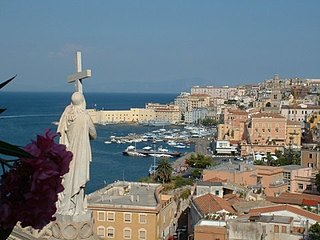 W
WThe Siege of Gaeta saw the fortress city of Gaeta and its Neapolitan garrison under Louis of Hesse-Philippsthal besieged by an Imperial French corps led by André Masséna. After a prolonged defense in which Hesse was badly wounded, Gaeta surrendered and its garrison was granted generous terms by Masséna.
 W
WThe Battle of Golymin took place on 26 December 1806 during the Napoleonic Wars at Gołymin, Poland, between around 17,000 Russian soldiers with 28 guns under Prince Golitsyn and 38,000 French soldiers under Marshal Murat. The Russian forces disengaged successfully from the superior French forces. The battle took place on the same day as the Battle of Pułtusk.
 W
WIn the Battle of Halle on 17 October 1806 a French corps led by Jean-Baptiste Bernadotte fought the Prussian Reserve under Eugene Frederick Henry, Duke of Württemberg. The French defeated their opponents, forcing the Prussians to retreat northeast toward Dessau after suffering heavy losses. The clash occurred in the War of the Fourth Coalition, part of the Napoleonic Wars. The city of Halle is located about 30 kilometers northwest of Leipzig on the Saale River.
 W
WIn the Siege of Hamelin or Siege of Hameln, First French Empire forces captured the fortress of Hamelin from its garrison composed of troops from the Kingdom of Prussia. The siege was begun by the VIII Corps under French Marshal Édouard Adolphe Casimir Joseph Mortier. The marshal initially left General of Division Jean-Baptiste Dumonceau in charge of operations. General of Division Anne Jean Marie René Savary soon arrived to conduct negotiations with the Prussian commander General Karl Ludwig von Lecoq, who was quickly persuaded to surrender. Technically, the operation from the War of the Fourth Coalition was a blockade because a formal siege never took place. Hamelin is located 36 kilometers southwest of Hanover.
 W
WThe Java campaign of 1806–1807 was a minor campaign during the Napoleonic Wars by British Royal Navy forces against a naval squadron of the Kingdom of Holland, a client state of the French Empire, based on the island of Java in the Dutch East Indies. Seeking to eliminate any threat to valuable British merchant convoys passing through the Malacca Straits, Rear-Admiral Sir Edward Pellew determined in early 1806 that the Dutch naval forces based at Java, which included several ships of the line and three frigates, had to be defeated to ensure British dominance in the region. Lacking the forces to effect an invasion of the Dutch colony, Pellew instead sought to isolate and blockade the Dutch squadron based at Batavia in preparation for raids specifically targeting the Dutch ships with his main force.
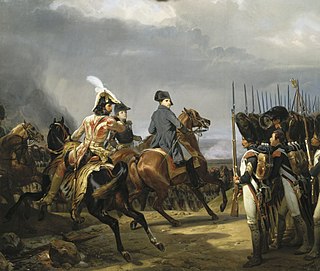 W
WThe twin battles of Jena and Auerstedt were fought on 14 October 1806 on the plateau west of the river Saale in today's Germany, between the forces of Napoleon I of France and Frederick William III of Prussia. The decisive defeat suffered by the Prussian Army subjugated the Kingdom of Prussia to the French Empire until the Sixth Coalition was formed in 1812.
 W
WLinois's expedition to the Indian Ocean was a commerce raiding operation launched by the French Navy during the Napoleonic Wars. Contre-Admiral Charles-Alexandre Durand Linois was ordered to the Indian Ocean in his flagship Marengo in March 1803 accompanied by a squadron of three frigates, shortly before the end of the Peace of Amiens. When war between Britain and France broke out in September 1803, Marengo was at Pondicherry with the frigates, but escaped a British squadron sent to intercept it and reached Isle de France. The large distances between naval bases in the Indian Ocean and the limited resources available to the British commanders in the region made it difficult to concentrate sufficient forces to combat a squadron of this size, and Linois was subsequently able to sustain his campaign for three years. From Isle de France, Linois and his frigates began a series of attacks on British commerce across the Eastern Indian Ocean, specifically targeting the large convoys of East Indiamen that were vital to the maintenance of trade within the British Empire and to the British economy. Although he had a number of successes against individual merchant ships and the small British trading post of Bencoolen, the first military test of Linois squadron came at the Battle of Pulo Aura on 15 February 1804. Linois attacked the undefended British China Fleet, consisting of 16 valuable East Indiamen and 14 other vessels, but failed to press his military superiority and withdrew without capturing a single ship.
 W
WThe Battle of Lübeck took place on 6 November 1806 in Lübeck, Germany between soldiers of the Kingdom of Prussia led by Gebhard Leberecht von Blücher, who were retreating from defeat at the Battle of Jena–Auerstedt, and troops of the First French Empire under Marshals Murat, Bernadotte, and Soult, who were pursuing them. In this War of the Fourth Coalition action, the French inflicted a severe defeat on the Prussians, driving them from the neutral city. Lübeck is an old Baltic Sea port approximately 50 kilometres (31 mi) northeast of Hamburg.
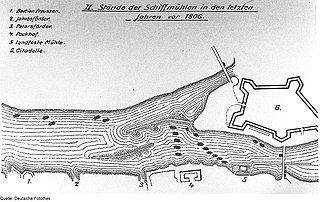 W
WThe siege of Magdeburg was a siege of the city that took place from 25 October to 8 November 1806 during the war of the Fourth Coalition. A French force, initially under the command of Marshal Grand Duke of Berg Joachim Murat, then a French army Corps under the command of Marshal Michel Ney laid siege and eventually obtained the surrender of Franz Kasimir von Kleist's Prussian force that had taken refuge in Magdeburg, Prussia's second city.
 W
WThe Battle of Maida, fought on 4 July 1806 was a battle between the British expeditionary force and a French force outside the town of Maida in Calabria, Italy during the Napoleonic Wars. John Stuart led 5,236 Anglo-Sicilian troops to victory over about 5,400 Franco-Italian-Polish troops under the command of French general Jean Reynier, inflicting significant losses while incurring relatively few casualties. Maida is located in the toe of Italy, about 30 kilometres (19 mi) west of Catanzaro.
 W
WThe Invasion of Naples was a front during the War of the Third Coalition where in January 1806 it saw a French army led by Marshal André Masséna march from northern Italy into the Kingdom of Naples which was ruled by King Ferdinand IV. The Neapolitan army was vanquished at Campo Tenese and rapidly disintegrated. The invasion was eventually successful despite some setbacks, including the prolonged Siege of Gaeta, the British victory at Maida, and a stubborn guerrilla war by the peasantry against the French. Total success eluded the French because Ferdinand withdrew to his domain in Sicily where he was protected by the Royal Navy and a British Army garrison. In 1806 Emperor Napoleon appointed his brother Joseph Bonaparte to rule over southern Italy as king.
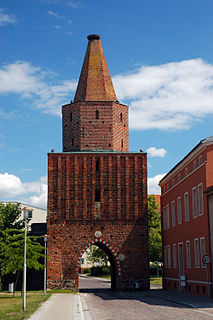 W
WThe Capitulation of Pasewalk on 29 October 1806 resulted in the surrender of Oberst (Colonel) von Hagen's 4,200 Prussian soldiers to an inferior force of two French light cavalry brigades led by Generals of Brigade Édouard Jean Baptiste Milhaud and Antoine Lasalle. The Prussians were completely demoralized after a two-week-long retreat following their decisive defeat at the Battle of Jena-Auerstedt. Pasewalk is 110 kilometers north of Berlin and about 40 kilometers west of Szczecin (Stettin), Poland.
 W
WGreater Poland uprising of 1806 was a military insurrection by Poles in Wielkopolska against the occupying Prussian forces after the Partitions of the Polish–Lithuanian Commonwealth (1772–1795).
 W
WIn the Battle of Prenzlau or Capitulation of Prenzlau on 28 October 1806 two divisions of French cavalry and some infantry led by Marshal Joachim Murat intercepted a retreating Prussian corps led by Frederick Louis, Prince of Hohenlohe-Ingelfingen. In this action from the War of the Fourth Coalition, Hohenlohe surrendered his entire force to Murat after some fighting and a parley. Prenzlau is located about 90 kilometers north of Berlin in Brandenburg, Germany at the intersection of routes B109 and B198.
 W
WThe Battle of Pułtusk took place on 26 December 1806 during the War of the Fourth Coalition near Pułtusk, Poland. Despite their strong numerical superiority and artillery, the Russians suffered the French attacks, before retiring the next day having suffered greater losses than the French, disorganizing their army for the rest of the year.
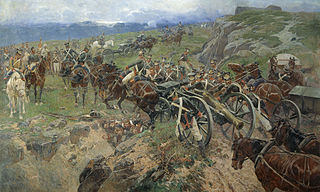 W
WThe 1804–1813 Russo-Persian War was one of the many wars between the Persian Empire and Imperial Russia, and began like many of their wars as a territorial dispute. The new Persian king, Fath Ali Shah Qajar, wanted to consolidate the northernmost reaches of his kingdom—modern-day Georgia—which had been annexed by Tsar Paul I several years after the Russo-Persian War of 1796. Like his Persian counterpart, the Tsar Alexander I was also new to the throne and equally determined to control the disputed territories.
 W
WThe Russo-Turkish War (1806–1812) between the Russian Empire and the Ottoman Empire was one of the Russo-Turkish Wars. Russia prevailed, but both sides wanted peace as they feared Napoleon's moves to the east.
 W
WThe Battle of Saalfeld took place on 10 October 1806, at which a French force of 12,800 men commanded by Marshal Jean Lannes defeated a Prussian-Saxon force of 8,300 men under Prince Louis Ferdinand. The battle took place in Thuringia in what was the Ernestine duchy of Saxe-Coburg-Saalfeld. The battle was the second clash in the Prussian Campaign of the War of the Fourth Coalition.
 W
WThe Battle of San Domingo was a naval battle of the Napoleonic Wars fought on 6 February 1806 between squadrons of French and British ships of the line off the southern coast of the French-occupied Spanish colonial Captaincy General of Santo Domingo in the Caribbean.
 W
WThe Battle of Schleiz took place on October 9, 1806 in Schleiz, Germany between a Prussian-Saxon division under Bogislav Friedrich Emanuel von Tauentzien and a part of Jean-Baptiste Bernadotte's I Corps under the command of Jean-Baptiste Drouet, Comte d'Erlon. It was the first clash of the War of the Fourth Coalition, part of the Napoleonic Wars. As Emperor Napoleon I of France's Grande Armée advanced north through the Frankenwald it struck the left wing of the armies belonging to the Kingdom of Prussia and the Electorate of Saxony, which were deployed on a long front. Schleiz is located 30 kilometers north of Hof and 145 kilometers southwest of Dresden at the intersection of Routes 2 and 94.
 W
WThe Siege of Belgrade was carried out by the Serbian rebels led by Karađorđe, seeking to overthrow the Ottoman government in the Sanjak of Smederevo, which was seated in the Belgrade Fortress. Following the decisive victories at Mišar and Deligrad (September), the Serbian rebels marched towards Belgrade.
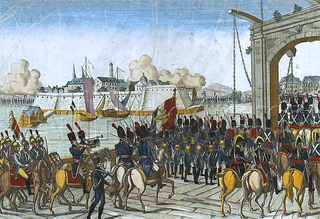 W
WIn the Capitulation of Stettin on 29–30 October 1806, Lieutenant General Friedrich Gisbert Wilhelm von Romberg surrendered the garrison and fortress to a much smaller French light cavalry brigade led by General of Brigade Antoine Lasalle. This event was one of a number of surrenders by demoralized Prussian soldiers to equal or inferior French forces after their disastrous defeat at the Battle of Jena-Auerstedt on 14 October. Stettin, now Szczecin, Poland, is a port city on the Oder River near the Baltic Sea, about 120 kilometres (75 mi) northeast of Berlin.
 W
WThe War of the Third Coalition was a European conflict spanning the years 1803 to 1806. During the war, France and its client states under Napoleon I, defeated an alliance, the Third Coalition, made up of the United Kingdom, the Holy Roman Empire, the Russian Empire, Naples, Sicily and Sweden. Prussia remained neutral during the war.
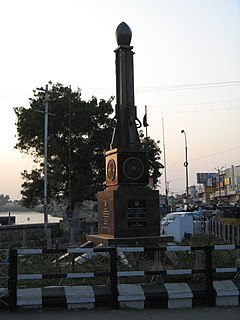 W
WThe Vellore mutiny on 10 July 1806 was the first instance of a large-scale and violent mutiny by Indian sepoys against the East India Company, predating the Indian Rebellion of 1857 by half a century. The revolt, which took place in the South Indian city of Vellore, lasted one full day, during which mutineers seized the Vellore Fort and killed or wounded 200 British troops. The mutiny was subdued by cavalry and artillery from Arcot. Total deaths amongst the mutineers were approximately 350; with summary executions of about 100 during the suppression of the outbreak, followed by the formal court-martial of smaller numbers.
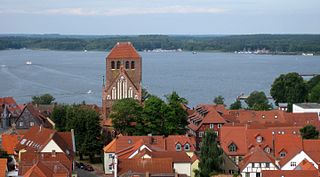 W
WThe Battle of Waren-Nossentin on 1 November 1806 saw soldiers of the Kingdom of Prussia led by August Wilhelm von Pletz and Ludwig Yorck von Wartenburg fight a rear guard action against troops of the First French Empire commanded by Marshal Jean-Baptiste Bernadotte. Though forced to give ground, the Prussians successfully kept the French from inflicting serious loss or cutting off any units in this War of the Fourth Coalition action. Waren lies on the northern end of Lake Müritz, about 70 kilometres (43 mi) southeast of Rostock. Nossentin is a small village on the Fleesen See about 15 kilometres (9 mi) due west of Waren.